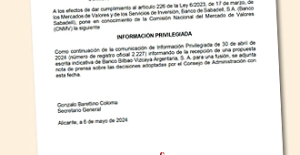The two exoplanets WASP-76b and WASP-121b contain the heavy element barium in their upper atmosphere. This is shown by high-resolution spectra obtained at the Very Large Telescope of the European Southern Observatory ESO in Chile. It is the heaviest element to date that has been detected in the atmosphere of planets around other stars. And it poses a problem for the astronomers: With the strong gravitational pull of the two planets, there should be no such heavy substances high in the atmosphere, the discoverers write in the journal Astronomy
"The barium should fall down from the upper atmosphere very quickly," explains Olivier Demangeon of the University of Porto in Portugal. "At the moment we have no idea what mechanism transports this element up." The two planets, which are 640 and 860 light-years away from Earth, are "hot Jupiters" - i.e. gas planets that are similar in size and mass to Jupiter in resemble our solar system.
However, they orbit their central star in a very narrow orbit with an orbital period of less than two days. Due to the proximity of the star, the temperature of the atmosphere is about 2000 degrees Celsius.
Such planets are particularly worthwhile observation objects for astronomers. "Because they are mostly gas and very hot, they have extensive atmospheres," says Demangeon, "so we can observe and study their atmospheres much more easily than those of smaller and cooler planets." The position of the planetary orbits also helps the sky researchers in these observations: They are oriented in such a way that the planets regularly pass in front of their central star when viewed from Earth.
During these "transits," the planets obscure part of the star, dimming its light - and these regular eclipses help in discovering the planets. Crucial to studies like Demangeon and his colleagues' is that a small portion of starlight shines through the atmosphere of each planet. In this part of the starlight, the atmosphere leaves a kind of fingerprint: the materials that make up the atmosphere absorb starlight at characteristic wavelengths.
Using these "spectral lines", the researchers can then identify the substances that make up the planet's atmosphere. However, the whole process is expensive and complicated. First, the researchers need a high-resolution spectrograph, a special additional device on the telescope that breaks down the radiation into its wavelengths. And then the astronomers have to eliminate all influences of the star and also of the earth's atmosphere from the data.
Demangeon and his colleagues were initially able to confirm a large number of substances that had already been indicated by earlier observations. The researchers have also discovered new cobalt and strontium. And then they came across spectral lines from barium - and at first doubted that these actually came from the exoplanets. "We weren't looking for barium," says Azevedo Silva from the University of Porto, "because we didn't expect any barium there." Only after further checks were the scientists convinced of their surprising discovery.
According to the researchers, the detection of barium in the atmospheres of two hot Jupiters indicates that such heavy elements could often be found in the atmospheres of extremely hot Jupiters. There must be previously unknown atmospheric currents that transport such substances into the upper atmosphere.

 Sabadell rejects the merger with BBVA and will fight to remain alone
Sabadell rejects the merger with BBVA and will fight to remain alone In Germany, the far left wants to cap the price of “doner kebabs”
In Germany, the far left wants to cap the price of “doner kebabs” Israel-Hamas war: Gaza between hope of truce and fear of Israeli offensive in the South
Israel-Hamas war: Gaza between hope of truce and fear of Israeli offensive in the South “Mom, Dad, please don’t die”: in the United States, a nine-year-old child saves the lives of his parents injured in a tornado
“Mom, Dad, please don’t die”: in the United States, a nine-year-old child saves the lives of his parents injured in a tornado A baby whose mother smoked during pregnancy will age more quickly
A baby whose mother smoked during pregnancy will age more quickly The euro zone economy grows in April at its best pace in almost a year but inflationary pressure increases
The euro zone economy grows in April at its best pace in almost a year but inflationary pressure increases Children born thanks to PMA do not have more cancers than others
Children born thanks to PMA do not have more cancers than others Breast cancer: less than one in two French women follow screening recommendations
Breast cancer: less than one in two French women follow screening recommendations “House of the Dragon”, “Succession”… Max, the new streaming platform from HBO and Discovery, launched in France on June 11
“House of the Dragon”, “Succession”… Max, the new streaming platform from HBO and Discovery, launched in France on June 11 The A13 motorway will finally reopen this Friday, in one direction only
The A13 motorway will finally reopen this Friday, in one direction only TNT commission of inquiry: tensions between LFI deputies and Macronists before the vote on the report
TNT commission of inquiry: tensions between LFI deputies and Macronists before the vote on the report Apple unveils a new, more efficient iPad range
Apple unveils a new, more efficient iPad range The Gaza War invites itself to the 2024 Pulitzer Prizes
The Gaza War invites itself to the 2024 Pulitzer Prizes Judith Godrèche presents a short film on sexual violence in Cannes
Judith Godrèche presents a short film on sexual violence in Cannes Kevin Spacey: new trial in sight in London for the American actor, for sexual assault
Kevin Spacey: new trial in sight in London for the American actor, for sexual assault Taylor Swift fans make London pub Black Dog their new place of pilgrimage
Taylor Swift fans make London pub Black Dog their new place of pilgrimage Omoda 7, another Chinese car that could be manufactured in Spain
Omoda 7, another Chinese car that could be manufactured in Spain BYD chooses CA Auto Bank as financial partner in Spain
BYD chooses CA Auto Bank as financial partner in Spain Tesla and Baidu sign key agreement to boost development of autonomous driving
Tesla and Baidu sign key agreement to boost development of autonomous driving Skoda Kodiaq 2024: a 'beast' plug-in hybrid SUV
Skoda Kodiaq 2024: a 'beast' plug-in hybrid SUV The home mortgage firm rises 3.8% in February and the average interest moderates to 3.33%
The home mortgage firm rises 3.8% in February and the average interest moderates to 3.33% This is how housing prices have changed in Spain in the last decade
This is how housing prices have changed in Spain in the last decade The home mortgage firm drops 10% in January and interest soars to 3.46%
The home mortgage firm drops 10% in January and interest soars to 3.46% The jewel of the Rocío de Nagüeles urbanization: a dream villa in Marbella
The jewel of the Rocío de Nagüeles urbanization: a dream villa in Marbella Institutions: senators want to restore the accumulation of mandates and put an end to the automatic presence of ex-presidents on the Constitutional Council
Institutions: senators want to restore the accumulation of mandates and put an end to the automatic presence of ex-presidents on the Constitutional Council Europeans: David Lisnard expresses his “essential and vital” support for François-Xavier Bellamy
Europeans: David Lisnard expresses his “essential and vital” support for François-Xavier Bellamy Facing Jordan Bardella, the popularity match turns to Gabriel Attal’s advantage
Facing Jordan Bardella, the popularity match turns to Gabriel Attal’s advantage Europeans: a senior official on the National Rally list
Europeans: a senior official on the National Rally list These French cities that will boycott the World Cup in Qatar
These French cities that will boycott the World Cup in Qatar PSG-Dortmund: a gigantic tifo on three stands to welcome the players
PSG-Dortmund: a gigantic tifo on three stands to welcome the players PSG-Dortmund: in video, Donnarumma’s decisive save which saves the Parisians
PSG-Dortmund: in video, Donnarumma’s decisive save which saves the Parisians Pro D2: Biarritz goes before the regulatory authority and reveals partners
Pro D2: Biarritz goes before the regulatory authority and reveals partners Champions League: without madness then cursed, PSG lets its dreams of the final fly away
Champions League: without madness then cursed, PSG lets its dreams of the final fly away


















